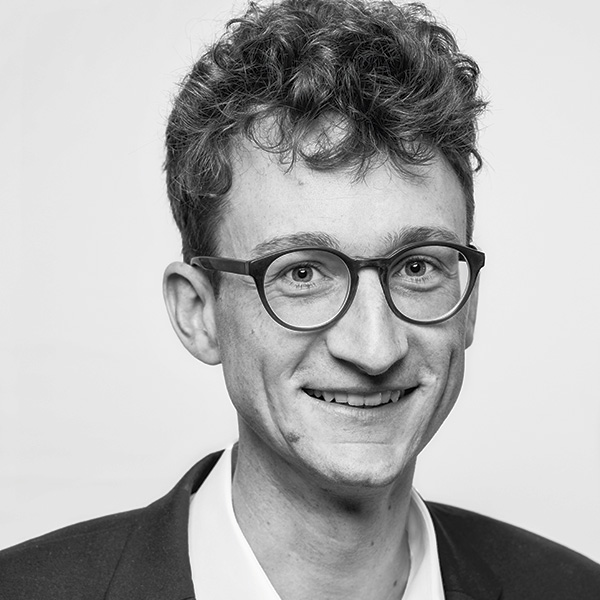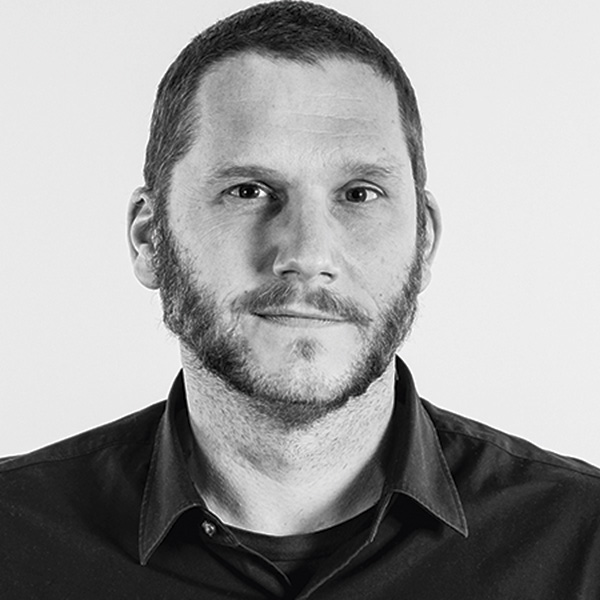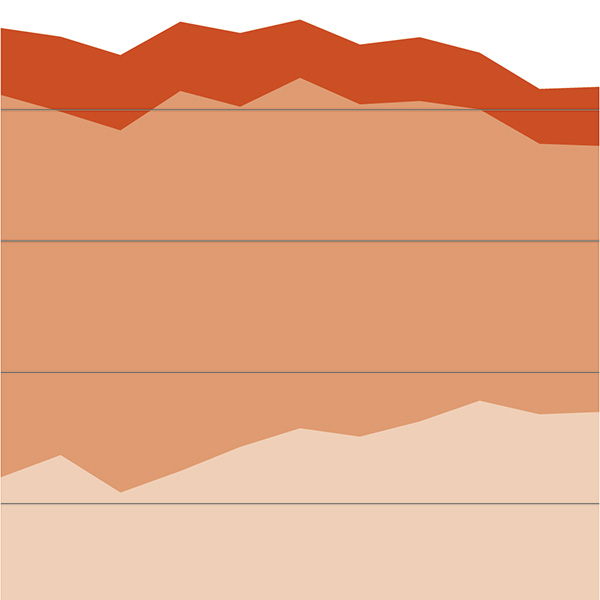DEBATE
Should there be stricter regulation for laboratories doing dangerous research into viruses?

Photo: Provided by subject

Photo: Provided by subject
Virological research has achieved undeniable success with vaccines against polio, measles and Covid-19 (the last of these created in record time). It’s saved millions of lives. Without dedicated researchers working with dangerous pathogens in high-security labs, these breakthroughs would have been impossible. But research that saves lives can also endanger them. Between 2000 and 2021 alone, over 300 laboratory infections with 51 different pathogens were documented across the world, and they resulted in eight deaths. And many laboratory accidents go unrecorded – there’s been no systematic attempt at recording accident statistics.
What’s especially worrying are certain so-called ‘gain-of-function’ experiments in which viruses are deliberately made even more dangerous. It remains unclear whether the more dangerous variant would ever occur in Nature, but working with them always remains highly risky. According to Marc Lipsitch, a professor at Harvard, releasing an influenza virus of this kind could potentially kill anywhere from two million to 1.4 billion people.
With synthetic biology and AI, biotechnology is becoming an engineer’s art. The WHO believes that even extinct viruses such as smallpox could be reconstructed. And yet the high-security labs that exist in Switzerland are sometimes not inspected for years. In 2023, the Swiss National Council and the Federal Council commissioned a review of the supervision and control of high-security laboratories. Cantonal authorities are doing a great job, but often lack the necessary resources. So what needs to be done? First, there have to be mandatory courses for all biosafety officers. Secondly, we have to create a sanction-free reporting system with transparent statistics – like they have in Canada. Thirdly, there has to be an independent, national, biosafety inspectorate – like we have in the nuclear sector.
Measures such as these will increase trust in virus research, and have already been implemented in other risk sectors. For example, employees at Zurich Airport are checked for their trustworthiness. Safety and research are not contradictory. It’s not about having your cake and eating it. Progress in virus research and safety actually go hand in hand. A single accident could destroy trust and ruin hopes of future success in virus research.
Laurent Bächler is programme manager for biosecurity at the think tank Pour Demain. He works on evidence-based proposals for a resilient society where science and politics meet.
The debate about gain-of-function experiments, for example, has to some extent become polarised and highly simplified, meaning that people quickly get the impression that virologists are working quite arbitrarily with highly pathogenic pathogens in an effort to make them even more dangerous. But these experiments are very important in everyday research. For instance, they can provide us with information about the disease-causing effects of viruses that have been made artificially resistant to drugs.
“How can a virus adapt to a new host, and is it afterwards just as dangerous?” are important questions that you have to ask in the early stages of any new pandemic. And it’s a topic that we only partially understand. This kind of information can only be obtained to a limited extent from computer models or experiments with less dangerous pathogens, because the latter often behave differently.
This naturally doesn’t mean that virological research is like the Wild West. In Switzerland, researching with highly pathogenic pathogens requires a permit, and projects are only approved after an independent panel of experts has finished a review of the risks. This is done centrally at a national level, which means that safety norms across Switzerland are standardised. This is an advantage over institutional biosafety committees such as are usual in the USA. A detailed risk assessment is already required when you submit your initial application to carry out a project.
Labs have to be appropriately kitted out and procedures standardised in such a way as to minimise the risk either of infecting an employee or of releasing any materials unintentionally. The safety-relevant elements of a high-security laboratory are inspected regularly and independently. These elements include, for example, waste air filtration and sterilisers for waste treatment. Laboratory staff undergo supervised training before they’re allowed to conduct experiments on their own, and they receive regular follow-up training. I’m convinced that the current regulations and the combined monitoring by the federal government, the cantons and the lab operators in Switzerland ensure that research is safe. And it’s research that ultimately serves the security of the population.
Mirco Schmolke is a professor of virology at the University of Geneva. He’s worked with highly pathogenic viruses in Germany, the USA and Switzerland.

Photo: Provided by subject
Virological research has achieved undeniable success with vaccines against polio, measles and Covid-19 (the last of these created in record time). It’s saved millions of lives. Without dedicated researchers working with dangerous pathogens in high-security labs, these breakthroughs would have been impossible. But research that saves lives can also endanger them. Between 2000 and 2021 alone, over 300 laboratory infections with 51 different pathogens were documented across the world, and they resulted in eight deaths. And many laboratory accidents go unrecorded – there’s been no systematic attempt at recording accident statistics. What’s especially worrying are certain so-called ‘gain-of-function’ experiments in which viruses are deliberately made even more dangerous. It remains unclear whether the more dangerous variant would ever occur in Nature, but working with them always remains highly risky. According to Marc Lipsitch, a professor at Harvard, releasing an influenza virus of this kind could potentially kill anywhere from two million to 1.4 billion people.
With synthetic biology and AI, biotechnology is becoming an engineer’s art. The WHO believes that even extinct viruses such as smallpox could be reconstructed. And yet the high-security labs that exist in Switzerland are sometimes not inspected for years. In 2023, the Swiss National Council and the Federal Council commissioned a review of the supervision and control of high-security laboratories. Cantonal authorities are doing a great job, but often lack the necessary resources. So what needs to be done? First, there have to be mandatory courses for all biosafety officers. Secondly, we have to create a sanction-free reporting system with transparent statistics – like they have in Canada. Thirdly, there has to be an independent, national, biosafety inspectorate – like we have in the nuclear sector. Measures such as these will increase trust in virus research, and have already been implemented in other risk sectors. For example, employees at Zurich Airport are checked for their trustworthiness. Safety and research are not contradictory. It’s not about having your cake and eating it. Progress in virus research and safety actually go hand in hand. A single accident could destroy trust and ruin hopes of future success in virus research.
Laurent Bächler Bächler is programme manager for biosecurity at the think tank Pour Demain. He works on evidence-based proposals for a resilient society where science and politics meet.

Photo: Provided by subject
The debate about gain-of-function experiments, for example, has to some extent become polarised and highly simplified, meaning that people quickly get the impression that virologists are working quite arbitrarily with highly pathogenic pathogens in an effort to make them even more dangerous. But these experiments are very important in everyday research. For instance, they can provide us with information about the disease-causing effects of viruses that have been made artificially resistant to drugs. “How can a virus adapt to a new host, and is it afterwards just as dangerous?” are important questions that you have to ask in the early stages of any new pandemic. And it’s a topic that we only partially understand. This kind of information can only be obtained to a limited extent from computer models or experiments with less dangerous pathogens, because the latter often behave differently.
This naturally doesn’t mean that virological research is like the Wild West. In Switzerland, researching with highly pathogenic pathogens requires a permit, and projects are only approved after an independent panel of experts has finished a review of the risks. This is done centrally at a national level, which means that safety norms across Switzerland are standardised. This is an advantage over institutional biosafety committees such as are usual in the USA. A detailed risk assessment is already required when you submit your initial application to carry out a project. Labs have to be appropriately kitted out and procedures standardised in such a way as to minimise the risk either of infecting an employee or of releasing any materials unintentionally. The safety-relevant elements of a high-security laboratory are inspected regularly and independently. These elements include, for example, waste air filtration and sterilisers for waste treatment. Laboratory staff undergo supervised training before they’re allowed to conduct experiments on their own, and they receive regular follow-up training. I’m convinced that the current regulations and the combined monitoring by the federal government, the cantons and the lab operators in Switzerland ensure that research is safe. And it’s research that ultimately serves the security of the population.
Mirco Schmolke is a professor of virology at the University of Geneva. He’s worked with highly pathogenic viruses in Germany, the USA and Switzerland.




